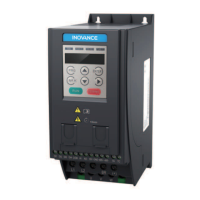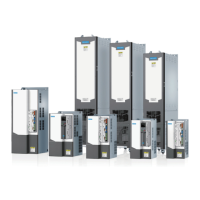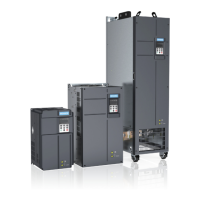Function Application
‑648‑
Para. Name De
fault
Value Range
Description
B1‑09
Acceleration
inertia
compensation
gain
100.0
%
0.0% to
200.0%
An inevitable deviation exists
between the theoretical inertia
and the actual inertia, so the
inertia compensation effect may
not be ideal even after the inertia
parameters are set.
To address this, set B1‑09 and B1‑
10 for fine tuning to optimize the
control effect. Take the winding
acceleration as an example. If the
material tension is small, increase
B1‑09 to strengthen the
compensation effect; otherwise,
decrease this parameter to
weaken the effect. This process
works the same for deceleration.
This set of parameters facilitates
commissioning.
B1‑10
Deceleration
inertia
compensation
gain
100.0
%
0.0% to
200.0%
Terminal tension rise
In some scenarios, customized torque boost is required.
When the DI (assigned with function 61) is activated, the tension torque is boosted.
After the DI terminal is deactivated, the boost part is canceled gradually.
Para. Name De
fault
Value Range
Description
B1‑34
Terminal tension
rise ratio
50.0% 0.0% to
500.0%
‑
B1‑35
Rise cancellation
transition time
0.0s 0.0s to 50.0s
‑

